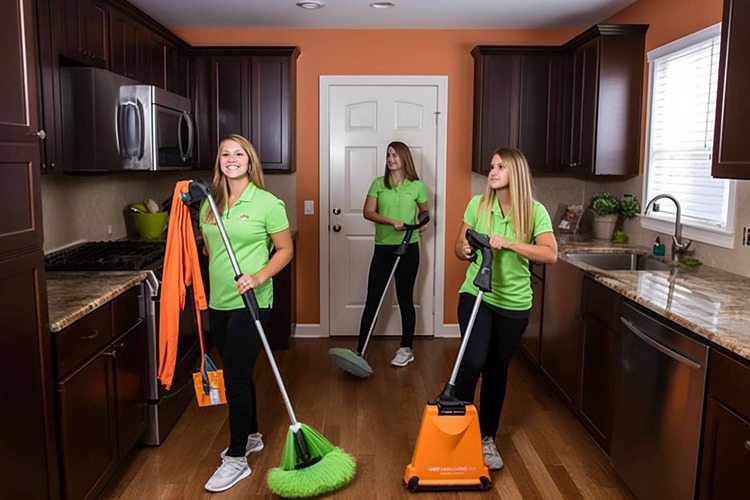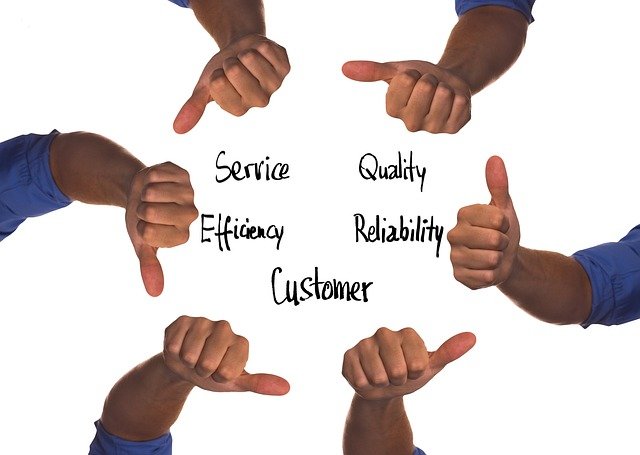Cleaning Services: Types, Quality Checks, and Booking Tips
A clean space doesn’t just look better—it functions better. Whether you’re juggling work and family or managing a busy workspace, professional cleaning services can restore order, reduce stress, and free up time. This guide explains what cleaning services include, how they differ, what to expect on service day, and how to evaluate providers in your area so you can book with confidence and get the results you want.

Types of cleaning services in your area
Professional cleaners typically offer several tiers and specialties to match different needs. Routine residential cleaning focuses on high-traffic areas—kitchens, bathrooms, floors, dusting, and quick surface refreshes. Deep cleaning dives into details like baseboards, grout, behind appliances, and interior cabinets, often recommended seasonally or before/after events. Move-in/move-out services emphasize empty-home readiness and meeting landlord or property handover standards. Commercial cleaning supports offices and retail spaces with tasks like trash removal, restrooms, break room sanitation, and scheduled floor care. Specialty services may include post-construction cleanup, window washing, carpet and upholstery care, and eco-friendly “green” cleaning options that reduce harsh chemical use.
What is bulk_create_keyword in cleaning SEO?
You may occasionally see odd placeholder terms like bulk_create_keyword in online service listings or articles. It’s a template marker used during content creation and should be replaced with actual keywords that reflect user intent—such as house cleaning, office cleaning, deep cleaning, or eco-friendly cleaning in your area. If you encounter such placeholders, focus instead on verifiable indicators of quality: clear service descriptions, transparent scope, insurance details, trained staff, and recent customer reviews. For cleaning companies, replacing placeholders with accurate phrases helps searchers find the right local services, while preventing confusion and ensuring your listing reads professionally.
How to choose a reliable cleaner
A trustworthy cleaning provider combines consistent results with dependable operations. Start by reviewing verified ratings and recent feedback that mention punctuality, thoroughness, and responsiveness. Confirm insurance and bonding to protect against accidental damage. Ask about staff training, background checks, and whether teams are employees or contractors—this can influence accountability and consistency. Clarify what’s included in a standard or deep clean, and request a written scope so expectations are aligned. If you prefer fragrance-free or plant-based products, ask about green cleaning options. Finally, assess communication: reliable providers set clear arrival windows, offer easy rescheduling, and follow up to ensure your satisfaction.
What to expect on cleaning day
Before your appointment, tidy personal items and clear counters where possible so cleaners can focus on actual cleaning rather than organizing. Provide entry instructions and pet notes to reduce delays and stress. Some companies bring their own supplies and equipment, including vacuums and microfiber tools; others may use products you supply—ask ahead so you’re prepared. Upon arrival, walk through the space with the team lead, highlight priorities, and identify any delicate items or restricted areas. After the service, do a quick inspection using the agreed checklist. If anything was missed within the defined scope, communicate promptly—reputable providers welcome constructive feedback to fine-tune future visits.
Frequency, add-ons, and sustainability
Cleaning cadence depends on lifestyle, foot traffic, and space size. Weekly or bi-weekly service keeps surfaces consistently maintained, while monthly or quarterly deep cleans handle buildup in less-visible areas. Add-ons like interior appliance detailing, window tracks, or inside-cabinet cleaning are often scheduled less frequently and may require extra time. If sustainability matters, ask about low-VOC products, concentrated solutions that reduce packaging, and reusable microfiber systems for better dust capture. HEPA-filter vacuums can help reduce fine particles on floors and upholstery. Small habits between visits—like wiping spills promptly and using doormats—extend the impact of professional cleaning and help maintain a tidy baseline.
Setting clear scopes and avoiding common pitfalls
Misunderstandings usually stem from unclear scope or assumptions. A good practice is to request a room-by-room checklist that distinguishes standard tasks from deep-clean items. Clarify exclusions such as outdoor areas, high-risk heights, or hazardous materials. Be realistic about timelines: a first-time deep clean in a large or high-traffic space may need more hours than routine upkeep. If your home has specialty surfaces—natural stone, unfinished wood, high-gloss cabinetry—confirm the products and methods are appropriate. Lastly, discuss preferred communication channels for schedule updates, access changes, or post-service notes. Clear expectations lead to smoother visits and more consistent results.
When DIY and pro services work together
Professional cleaning and DIY maintenance are complementary. Daily quick tidying, dish management, and spot wiping reduce clutter and grime between professional visits. Meanwhile, pros handle time-consuming or technical tasks—like detailed bathroom sanitation, grout attention, or thorough dust removal in hard-to-reach places. This hybrid approach helps control mess before it escalates, making each professional session more efficient. Over time, you can adjust frequency based on seasonality, travel plans, or changes in household activity. Keep an open line of dialogue with your provider; if you notice areas that need more focus, a small scope tweak can make a noticeable difference.
Red flags and green flags to recognize
Green flags include transparent pricing structures, written scopes, insured teams, consistent staffing, punctuality, and a satisfaction policy. Providers who proactively ask about preferences, allergies, or surface sensitivities show attention to detail. Red flags include vague service descriptions, reluctance to confirm insurance, no references or poor recent reviews, or pushy contracts without clear cancellation terms. Another warning sign is overpromising timelines for complex deep cleans; seasoned teams will set realistic expectations, especially for initial visits. Trust your comfort level during the consultation—professionalism, clarity, and responsiveness are strong predictors of reliable service.
Final thoughts
Cleaning services work best when expectations are clearly defined, timelines are realistic, and both parties communicate openly. By understanding service types, aligning on scope, and vetting companies for quality and reliability, you can maintain a clean, functional space with less stress. Thoughtful scheduling and small daily habits will extend the benefits of each visit, keeping your home or workspace consistently fresh and organized.






